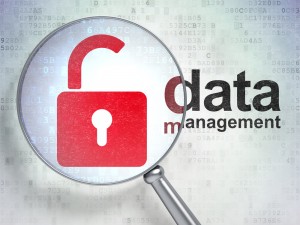
Featured Content

Smart Infrastructure & Smart Applications for the Smart Business – Infrastructure & Application Performance Monitoring

Data Catalogs: Governing & Provisioning Data in a Data Driven Enterprise (12 December 2024, Italy Livestream Training)

Data Catalogs – Governing & Provisioning Data in a Data Driven Enterprise (16 October 2024, Stockholm)
Blog
The Two Sides of Collaborative BI
While there is a lot of hype around collaborative BI today, this concept is not new. First attempts at introducing collaborative functionality into BI environments happened as far back as eight years ago or more when vendors of Corporate Performance Management (CPM) products in particular added collaborative functionality to their products to allow users to annotate scorecards and comment on performance measures. In addition being able to email links to report also appeared. While a lot was marketed about these kinds of features, they only achieved limited success. A key reason for this in my opinion was because collaborative functionality was ‘baked into’ BI and CPM tools. In other words vendors brought collaboration to BI. However the MySpace and Facebook generation taught us a different approach. What these collaborative and social networking environments showed was that it is much more natural to publish content to collaborative workspaces to elicit feedback and to share that content with others who are interested in it.
In the context of BI, this turned the first generation collaborative BI tools on their head and said rather than take collaboration to BI it is far more effective to take BI to collaborative platform where the range of collaborative tools available offers a lot more power. Lyzasoft was a pioneer of this new generation of modern social and collaborative BI technologies. Also new releases of more widely adopted BI platform products are now being integrated with mainstream collaborative platforms such as Microsoft SharePoint and IBM Lotus Connections. Even cloud based collaboration technologies from vendors like Google are getting in on the act. Mobile BI technology is taking this further by allowing people to collaborate on BI from mobile devices.
However, I (and others) would argue that we are still seeing only one side of the coin here with respect to BI and collaboration. That side is the classic approach of formal integration of data from multiple sources into a data warehouse, the producing of intelligence and the publishing of BI artefacts (dashboards, reports, etc.) into social and collaborative environments where it can be shared with others, rated and collaborated upon for joint decision making. But what about innovation, what about when innovative business users want to experiment, get some data and ‘play’ with it in a sandbox environment to figure out what business insight might be useful or to figure out what new metrics that would be useful to the business? Do we not need collaboration here also? Another probing question is whether this innovation should be ‘upstream’ from a data warehouse? In other words let them play with the data until there is consensus as to what is useful and then feed this into a more classic approach of data integration, storage, analysis and sharing. I am comforted by the fact that it is not only me asking this question. Others like my good friend Barry Devlin are also talking about the use of collaboration and sharing of business insight produced in an innovative environment. I know Barry will be speaking about this here. The point is that in my opinion ( and it is only opinion admittedly) there is a place for collaborative and social BI in an innovative sandbox environment where BI is not yet ‘hardened’. We need this capability in many industries. I have come across it in both retail banking and in manufacturing for example. However, what must be controlled is the release of newly formed innovation into production. This is where governance comes in. Data governance would allow newly created metrics to be published in a business glossary to be used by multiple BI tools in a hardened production environment for example. Also at this point, new data sources may be declared to a more formal production DW/BI environment for data acquisition. Therefore we have two sides to collaborative BI, the innovation cycle which needs to share ‘experimental’ information and elicit feedback from other as well as the more formal production BI/DW environment where well polished business insight is shared across the enterprise for people to use and act on. One feeds the other, typically because innovators also need to collaborate with IT to take the innovation and move it into the mainstream environment.
Let me know what you are doing with social and collaborative BI. I would be grateful for your comments.

Register for additional content
Register today for additional and exclusive content - informative research papers, product reviews, industry news.






